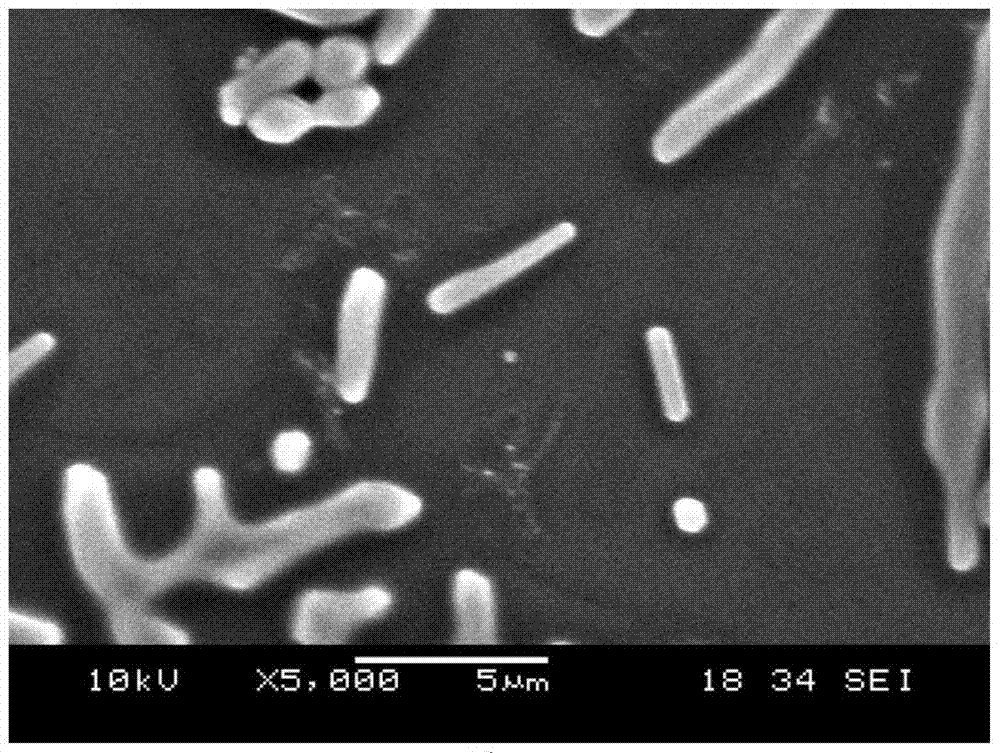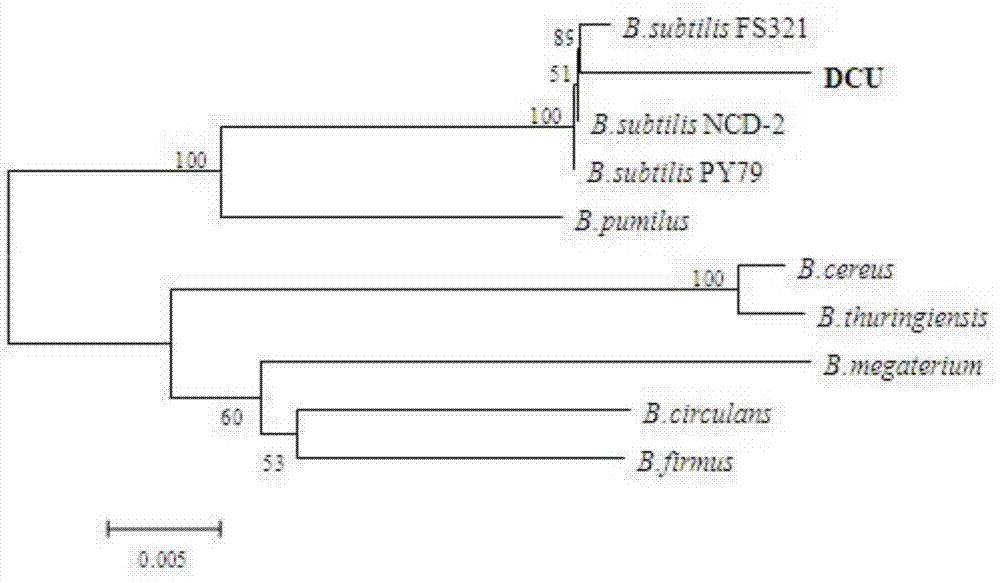Bacillus subtilis DCU and use thereof
A technology of Bacillus subtilis and uses, applied in the directions of bacteria, applications, microorganisms, etc., can solve the problem of insignificant effect and other problems, achieve good anti-pathogenic activity, wide application prospects, and inhibit growth and reproduction.
- Summary
- Abstract
- Description
- Claims
- Application Information
AI Technical Summary
Problems solved by technology
Method used
Image
Examples
Embodiment 1
[0023] Example 1: Separation and purification of Bacillus subtilis DCU
[0024] 1) Isolation and purification of strains: The mud crabs were collected from the Niutian mud crab farm in Shantou, Guangdong (the mud crabs are disease-resistant crabs that still survive after suffering from "milk disease"), brought back to the laboratory, and distilled water to rinse the surface sludge and other debris, alcohol After spraying, dissect and take the intestinal contents under the ultra-clean bench to complete the collection of the intestinal contents of the mud crab. The strains were isolated from the intestines of cultured Scylla simulans, diluted with LB, 2216E, and TCBS medium, and then cultured at 28°C overnight. One of the strains had a suspected inhibitory effect on other surrounding strains, and it was re-plated and isolated and purified.
[0025] 2) Strain identification: Preliminary identification was carried out by observing cell morphology and physiological and biochemical...
Embodiment 2
[0030] Example 2: Bacteriostatic test of Bacillus subtilis DCU
[0031] Bacillus subtilis DCU was cultured, and the paper disc method was used to detect the bacteriostatic effect on Vibrio parahaemolyticus, a common pathogen in Scylla simulans culture. The bacteriostatic effect was observed according to the size of the inhibition zone.
[0032] Specific steps: Inoculate the pathogenic bacteria isolated from the intestinal tract of Scylla Crab into the corresponding liquid medium, shake at 180rpm at 28°C for overnight culture, draw 100μL of the culture medium and spread it on a 90mm petri dish, spread evenly, and place it on a flat surface. Dry up. A filter paper sheet with a diameter of about 6 mm that was cut in advance and dried in an oven after being sterilized by high pressure steam was immersed in the activated bacterial solution for about 24 hours for 20 minutes. Use sterilized tweezers to pick out the filter paper, stick it on the bottle wall until there is no obvious...
Embodiment 3
[0034] Embodiment 3: the culture method of Bacillus subtilis DCU
[0035] The inventors of the present application found that 2216E (Zobell) medium can be used to culture the Bacillus subtilis DCU, 2216E (Zobell) medium: yeast extract 1g, peptone 5g, NaCl 34g, Fe 3 PO 4 0.1g, add distilled water 800mL, natural pH, and dilute to 1000mL. Add 1.5% agar to solid plates. The culture conditions were as follows: the rotation speed was 180 rpm, the temperature was 28 °C, and the culture was carried out for 12 h.
[0036] The inventors of the present application also use a nutrient agar medium (NA) to culture the Bacillus subtilis DCU. The NA medium consists of: 10 g of peptone, 3 g of beef extract, 5 g of sodium chloride, natural pH, and distilled water to dilute to 1000 mL. The cultivation conditions were the same as above. The results showed that the growth rate and the final concentration of the strain in NA medium were better than those in 2216E medium.
PUM
 Login to View More
Login to View More Abstract
Description
Claims
Application Information
 Login to View More
Login to View More - R&D
- Intellectual Property
- Life Sciences
- Materials
- Tech Scout
- Unparalleled Data Quality
- Higher Quality Content
- 60% Fewer Hallucinations
Browse by: Latest US Patents, China's latest patents, Technical Efficacy Thesaurus, Application Domain, Technology Topic, Popular Technical Reports.
© 2025 PatSnap. All rights reserved.Legal|Privacy policy|Modern Slavery Act Transparency Statement|Sitemap|About US| Contact US: help@patsnap.com



